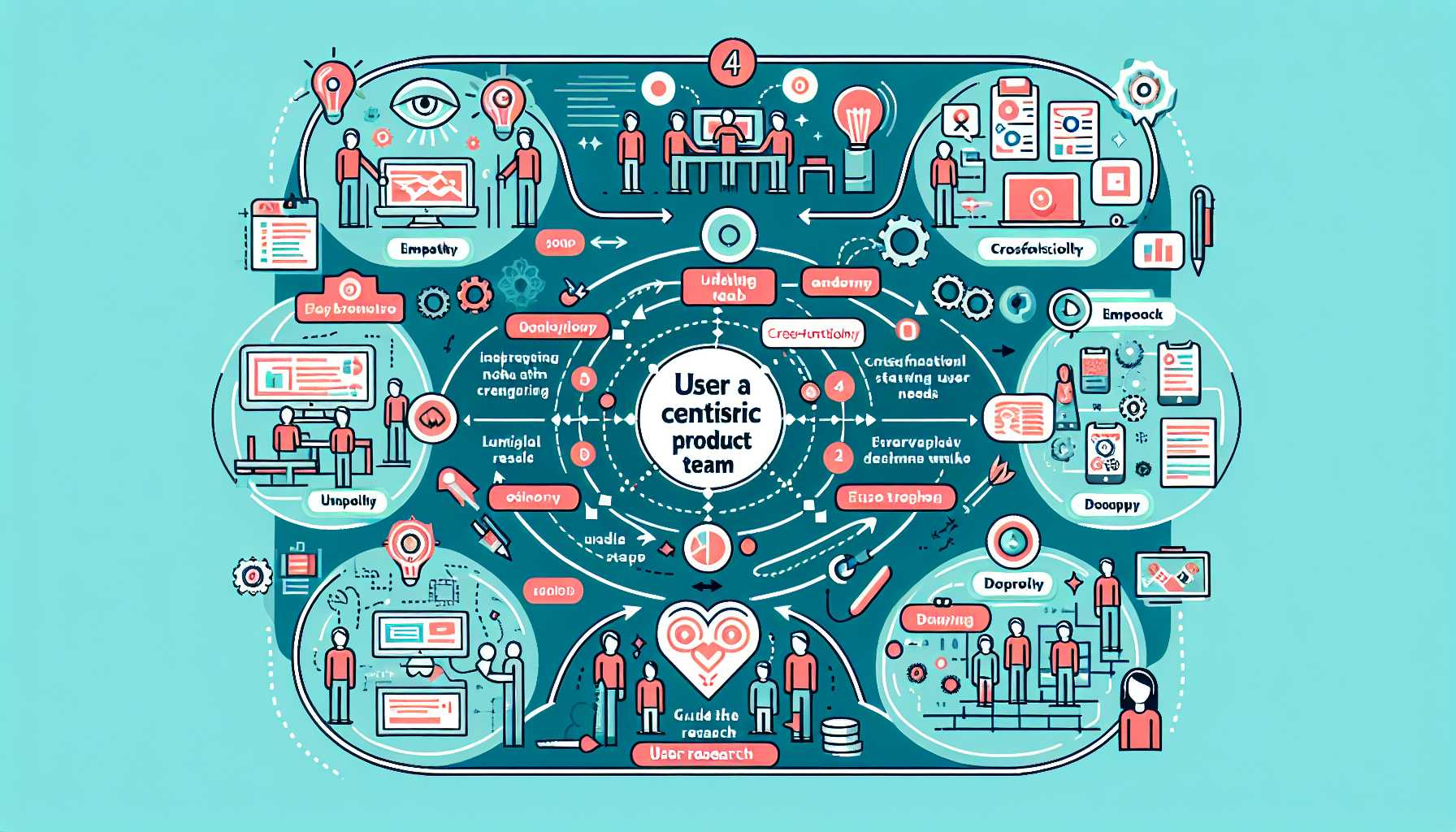Hello again, product aficionados. In this post, we’ll explore a subject at the very heart of what we do: fostering a user-centric culture in our product teams. The tech industry, known for its emphasis on innovation and engineering excellence, can sometimes overlook the fundamental truth that products are for people. Let’s dissect the strategies that bridge this gap, drawing on real-world examples and actionable frameworks.

The Bedrock of User Centricity
Building a user-centric product team is not an esoteric quest; it’s a deliberate, practical process that can be instilled into the DNA of an organization. This foundation involves a shift in perspective from being purely tech-focused to being problem-focused, thus ensuring the products we build genuinely resonate with the needs of our users.
Embedding Empathy in the Product Development Process
The journey begins with empathy. I have stood where you stand and have learned that no amount of technological sophistication can supplant the need for empathy towards our users. Embedding this value starts with leadership; hence, I led by example by immersing myself in the user’s environment, attending support calls, and engaging in direct user feedback sessions.
A Personal Anecdote of Empathy in Action
At a previous company that developed educational software, I witnessed first-hand the pitfalls of ignoring the student experience. We had built a technically superior platform, but adoption was languishing. By spending time in classrooms and understanding the teachers’ and students’ interactions with our product – their frustrations, their delights – we overhauled the user interface to simplify the experience. This empathy-driven pivot was a catalyst for change throughout the organization.
Advocating for User Research
Agile user research has been integral to my strategy for fostering a user-centric culture. User research is not a one-time project; it’s an ongoing conversation. I championed the incorporation of continuous user research into our product development lifecycle, which allowed us to test hypotheses and refine our understanding of user needs in real-time.
Real-Life Successes with Iterative User Research
In one of my more challenging roles, we were wrestling with feature bloat in a communication platform. Through iterative user research, we discovered that a significant portion of the features was going unused. This revelation prompted a feature audit that resulted in a more focused, more user-friendly product – a direct result of ongoing dialogue with our users.
Instituting a User-Centric Measurement Framework
What gets measured gets managed, and in my teams, we’ve adopted metrics that reflect user satisfaction and engagement. We moved beyond traditional KPIs like daily active users and incorporated the Net Promoter Score (NPS), Customer Satisfaction (CSAT), and Task Success Rates. These user-centric metrics served as a constant reminder of who we were ultimately serving: the user.
Evolving Metrics to Reflect User-Centricity
During the expansion of a fintech platform, rather than solely focusing on transaction volume, we steered our attention towards customer feedback and user-reported issues as primary metrics. These KPIs, once ingrained into our reporting and retrospective discussions, significantly shifted how the team prioritized domain improvements and feature development.
Creating Cross-Functional Empathy
Breaking down silos is crucial for user-centricity. By cross-pollinating teams – mixing engineers, designers, and support staff – I have fostered a shared understanding and collective ownership of the user experience. Cross-functional workshops, customer journey mapping sessions, and shared usability testing are some of the tools that have been most effective in achieving this goal.
Collaborative Wins in Cross-Disciplinary Teams
The launch of a marketplace feature within an e-commerce platform is a telling case. The initiative started with separate engineering and design silos, leading to disconnects. By blending the teams and co-creating with actual vendor and customer representatives, we achieved a product that seamlessly integrated the needs and perspectives of all stakeholders – a triumph of cross-functionality.
Conclusion
Cultivating a user-centric culture within a product team is a journey that starts with empathy and is sustained by continuous user research, user-centric metrics, and cross-functional collaboration. This approach goes beyond paying lip service to being “user-focused” and calls for structural and procedural changes that weave user-centricity into the everyday fabric of the product organization.
The benefits are not just in happier user bases; there are tangible improvements in team alignment, decision making, innovation, and even employee satisfaction. Through my experiences, I’ve found that the true value of any technology lies in its capacity to address human needs effectively and delightfully. As product leaders, our role is to be the bridge between technological capability and human desirability. Let us pave this bridge with empathy, insight, and an unwavering commitment to our users.
